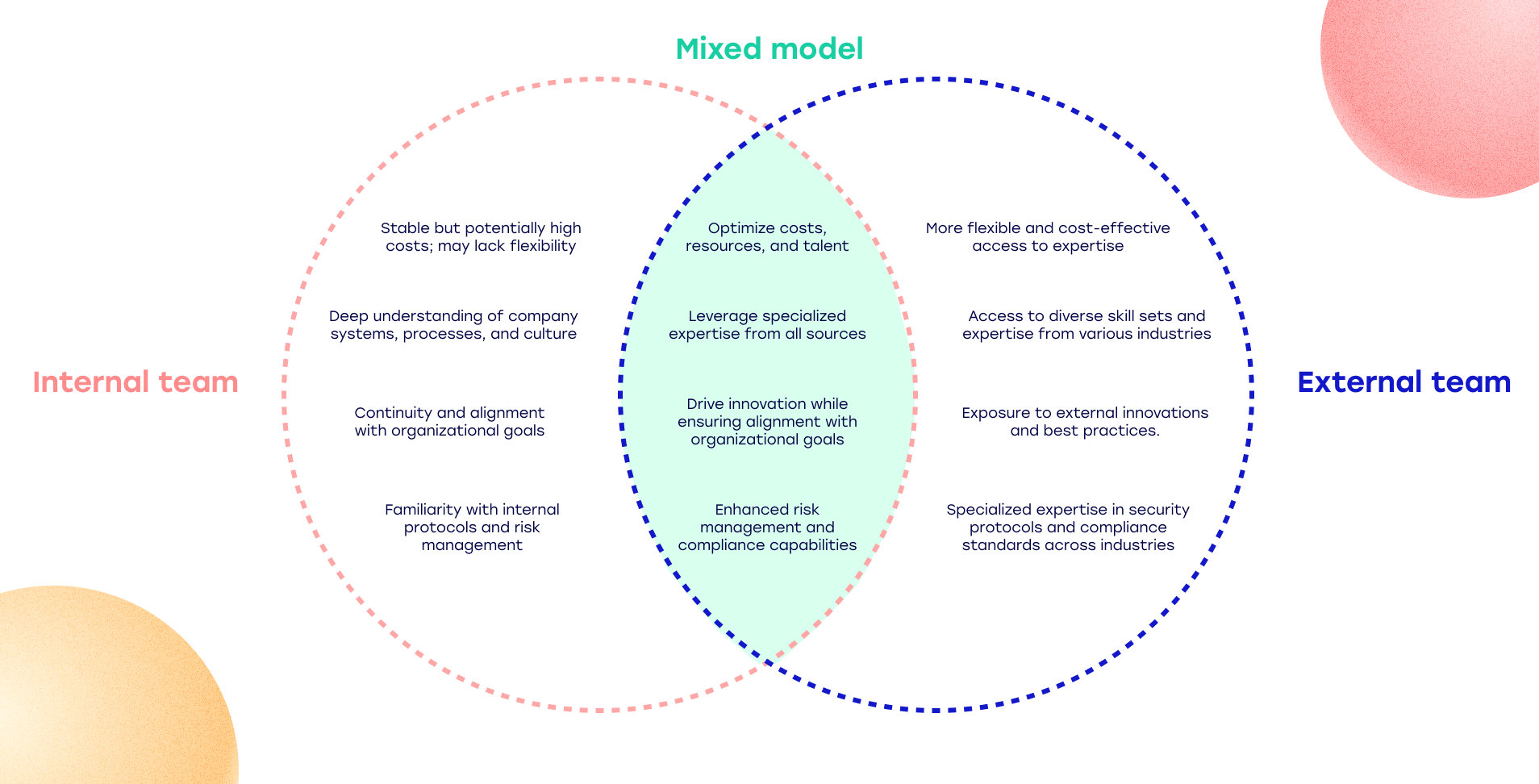As the Chief Information Officer (CIO) of a business, optimizing infrastructure, costs, and talent to serve the company best is a constant challenge.
Traditionally, the decision has been between two alternatives:
- either build an internal development team
- or fully outsource operations to a specialized IT services firm.
However, this binary mindset is becoming increasingly outdated in modern business. Our experience shows that a strategic, hybrid approach to IT management is the future for successful CIOs.
At Helmes, we frequently and successfully work with our customers’ internal IT teams. Here are some reasons that a mixed-model approach might be something that you want to consider.
Cost Efficiency
Maintaining a complete and well-staffed software development team in-house can offer stability and control, but it can also be an expensive affair, especially when the IT requirements change. On the other hand, outsourcing IT services can optimize costs by providing access to specialized expertise on a more flexible and cost-effective basis.
Resource Optimization
Internal and external development teams can work together to optimize resource allocation, taking into account project requirements, timelines, and skill sets. For instance, internal teams can focus on core activities that require domain-specific knowledge, while routine tasks or specialized projects can be outsourced to external providers.
One company based in the USA and UK has outsourced maintenance and development of their large .NET-based legacy system to Helmes, while its internal team focuses on enhancing the new core platform being built in Java.
Read more: Let us handle your legacy systems
Diverse Skillsets
Internal teams typically possess extensive knowledge of a company’s systems, processes, and culture. On the other hand, external development teams bring broad experience from working across various industries and tackling diverse challenges. By combining these skill sets, organizations can leverage the specialized expertise of internal teams and the fresh perspectives of external providers.
For instance, a Helmes client based in Switzerland worked with one of our teams to enhance and maintain their mobile app and its infrastructure. Helmes restructured and modernized the application in close collaboration with the client’s own team responsible for the data streamed to the mobile app.
Scalability and Flexibility
Internal teams provide consistency and share a common understanding of the organization’s long-term objectives. However, they may face limitations in terms of scalability when there is a surge in demand or when specialized skills are needed for specific projects. External IT services offer scalability and flexibility by providing access to additional resources and expertise as needed. This enables organizations to adapt quickly to changing requirements without overburdening internal staff too much.
To illustrate, a large German client of Helmes utilizes a team of six Helmes employees working with their IT services. The setup offers the possibility of varying levels of commitment and cost while maintaining a high level of service level agreement (SLA). The customer can avoid the recruitment and firing cycles that come with fluctuating needs.
Innovation and Best Practices
External IT service providers are often at the forefront of technological innovation and best practices. They have a wealth of experience from working with diverse clients and industries, which can inspire creative solutions to organizational challenges. Meanwhile, internal teams deeply understand the company’s unique needs and are well-positioned to implement innovations that align with internal processes and objectives. By collaborating closely, internal teams can harness the innovation capabilities of external IT services while ensuring alignment with organizational goals.
Risk Management and Compliance
Internal teams know the organization’s security protocols, compliance requirements, and risk management policies. However, external IT services often have specialized expertise in security protocols and compliance standards across various industries. By collaborating with external providers, organizations can enhance their risk management capabilities and ensure compliance with industry regulations without burdening on internal staff.
The decision to utilize internal or external development teams should not be seen as an either-or proposition but rather as a strategic choice that leverages the strengths of both approaches. By encouraging collaboration between internal teams and external providers, organizations can benefit from a range of diverse skills, drive innovation, control costs, reduce risks, and ultimately achieve their IT more effectively.
Get in touch




